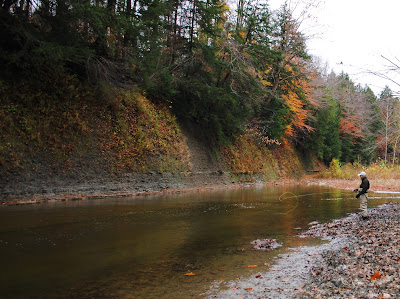The Largest and most popular Steelhead Tributary in Pennsylvania. Elk Creek is classified as a "Spate" stream in which the water flows continually fluctuate depending on the amount of run off from rain or snow melt. If the Elk receives to much water the streams can rise quickly and become high and muddy, if the Elk doesn't receive enough water the conditions will become extremely low and very clear. The good news is that after a high water event, the Elk typically will dial into fishable conditions within 24 to 36 hours.
USGS (Brandy Run) Tributary of Elk Creek
What to look for and how to read the USGS gauges: (Photos are Just reference and not acual current data)
Discharge, Cubic Feet Per Second- Elk Fishes best between 6-12 in the most instantaneous value section of the chart.
Gauge Height, Feet- Elk Fishes best when Brandy Run's height is 1.9 or below
Here are a few reference photos of Elk Creek and what the stream will typically look like during periods of run off and/or no precipitation.
In this photo of Elk Creek the USGS Brandy Run Gauge was at:
Discharge Rate: 15 and Gauge Height: 1.97
Elk Creek had less than 8 inches of visibility and was a milky green/brown color. This is considered High but fishable, and if you like to swing large 4-6 inch streamers on a switch or single hand rod. this is a good time to be on the stream as the conditions are roughly 24 hours prior to conditions productive for indicator fishing.
In this photo the USGS Brandy Run Gauge was at:
Discharge Rate: 9 and Gauge Height 1.8
Elk Creek had roughly 16 inches of water visibility and was a nice "Steelhead Green" This is the type of water most commonly associated with perfect flows and water color.
In this photo the USGS Brandy Run Gauge was at:
Discharge Rate: 2 and Gauge Height 1.0
Elk Creek water is crystal clear and the stream is very low. Steelhead are stacked in pools and are trying to take cover anywhere possible. Conditions like this require light tippets and very small fly patterns.




